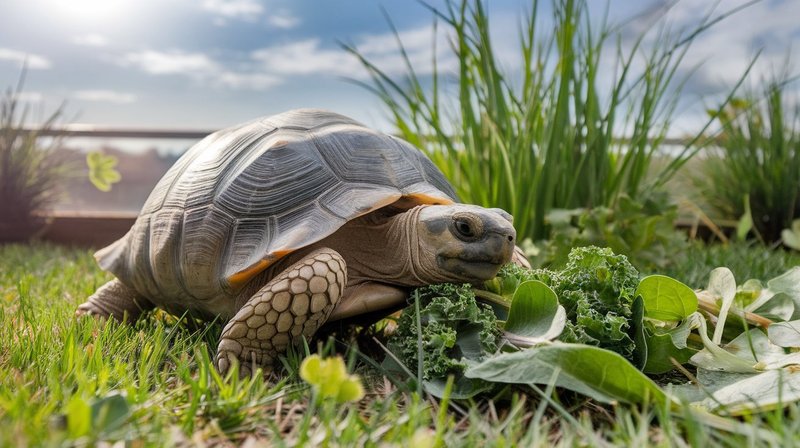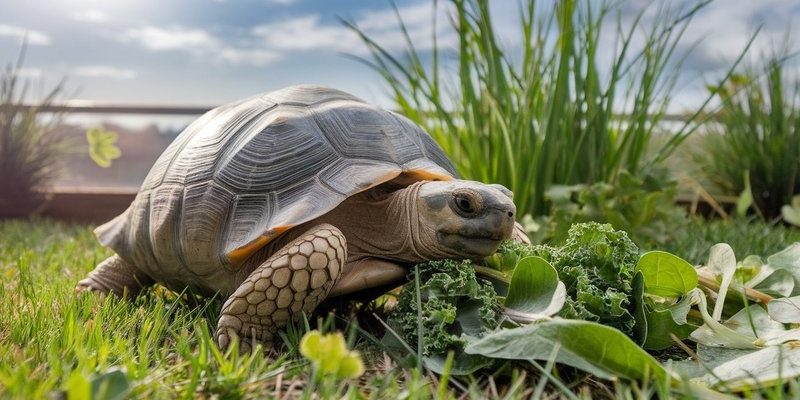
In this article, we’ll dive into the delicious world of what the Russian tortoise eats and how they acquire their food. It’s like exploring a little culinary adventure in the animal kingdom! Whether you’re a proud owner, a curious learner, or just love to know more about these fascinating reptiles, you’re in the right place. Let’s dig into their diet, behavior, and hunting techniques.
Understanding the Russian Tortoise’s Natural Habitat
Russian tortoises are primarily found in the dry, arid regions of Central Asia. Imagine a landscape dotted with rocky outcrops, sparse vegetation, and the warm sun beating down. This environment shapes the way they live and eat. In the wild, these tortoises are opportunistic feeders. They thrive on a variety of plants, which make up the bulk of their diet.
The tough, hearty plants in their natural habitat are well-suited to withstand drought and harsh conditions. You’ll find them munching on grasses, leafy greens, and some flowering plants. Their feeding habits are a reflection of their surroundings—always adapting to the food sources available. This adaptation has made them skilled at spotting nutritious meals while avoiding potential dangers, like predators.
What Do Russian Tortoises Eat?
You might be wondering, “What exactly do Russian tortoises like to munch on?” The answer is quite extensive! Here are some key components of their diet:
- Grasses: Their primary food source, rich in fiber and low in fat.
- Leafy greens: Collard greens, mustard greens, and dandelion greens are favorites.
- Flowers: They enjoy edible flowers like hibiscus and clover.
- Fruits: Occasionally, they’ll snack on small amounts of fruits like strawberries and melon, but these are treats, not staples.
This diet not only keeps them healthy but also helps them maintain a proper weight. It’s important to provide a balanced diet if you’re a tortoise owner. Too much fruit or high-fat foods can lead to health issues, so stick to that leafy green goodness!
How Russian Tortoises Forage for Food
Foraging is a vital skill for the Russian tortoise. Picture them slowly roaming their territory, using their keen senses to sniff out the best bites. They have a unique way of hunting for food that involves several interesting behaviors.
First, they use their sense of smell to detect food. Tortoises have a remarkable ability to identify edible plants from a distance. Once they locate a promising patch, they’ll wander over, often moving in a slow but purposeful manner. It’s almost like watching an investigator on a mission!
They also use their strong jaws to munch and tear at tougher plants. Russian tortoises can manage to nibble on some of the more fibrous foliage thanks to their powerful beaks. Think of them as tiny lawnmowers, tackling even the robust greens with ease.
Adaptations for Survival
One of the most fascinating aspects of the Russian tortoise is how they’ve adapted to their environment. Given the arid conditions of their habitat, they have developed some unique traits that help them survive.
For starters, their slow metabolism allows them to go longer without food. In the wild, this means they can withstand periods of scarcity, which is common in their native dry regions. They also have the ability to store water in their bodies, which is essential for survival in a place where resources can be scarce.
Moreover, their hard, protective shell serves more than just a covering; it helps them stay safe from predators while they graze on the ground. This combination of adaptability and resilience ensures they thrive despite the challenges their environment presents.
The Role of Hydration in Their Diet
While it’s easy to focus on solid food, hydration plays an equally crucial role in the Russian tortoise’s diet. These tortoises don’t drink water like most animals; instead, they absorb it from the plants they consume.
By eating moisture-rich greens, they ensure they stay hydrated. However, if you’re caring for a Russian tortoise, it’s important to provide a shallow dish of water for them. They might not drink like a dog does, but they’ll appreciate the chance to soak and hydrate if needed.
Feeding Your Russian Tortoise at Home
If you’re a proud owner, you’ll want to know how to create the best diet for your tortoise. Here’s a simple guide to keep your Russian tortoise happy and healthy:
1. Choose the Right Greens: Offer a variety of leafy greens like kale, dandelion leaves, and collard greens. Avoid iceberg lettuce, as it has little nutritional value.
2. Limit Fruits: Treat fruits as occasional snacks. Small amounts of berries or melon are perfect for a treat but shouldn’t dominate their diet.
3. Add Flowers: Include edible flowers in their meals. They not only provide nutrients but also are a fun treat for your tortoise.
4. Provide Fresh Water: Make sure they have access to clean water to soak in. It’s essential for hydration and health.
Providing a varied diet ensures your tortoise receives all the nutrients it needs to thrive.
The Russian tortoise may seem simple, but its eating habits tell a different story. From foraging in their natural habitat to adapting to survive in harsh conditions, they are remarkable little creatures. Understanding what they eat and how they hunt not only deepens our appreciation for them but also helps us care for them better as pets.
So, whether you’re thinking about getting a Russian tortoise or just enjoying learning about these intriguing reptiles, remember: their diet is vital, and it’s a big part of what makes them unique. Keep them munching on those greens, and you’ll be rewarded with a healthy, happy tortoise!

